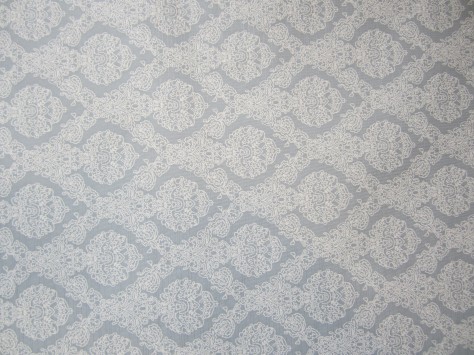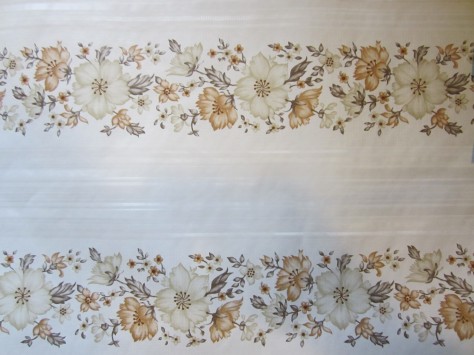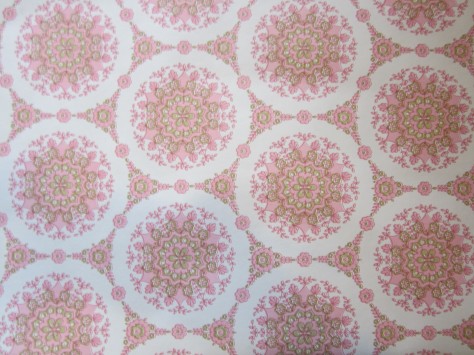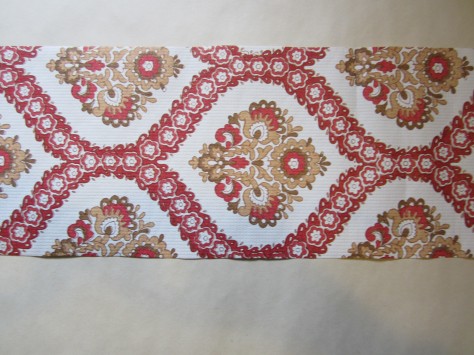Family History
Our family has been in the decorating business for over 100 years covering three generations from grandfather to grandson.
My grandfather served an apprenticeship as a craftsman decorator in Taunton Somerset after which he left Somerset for Barry in 1890.
In Barry he began to work in the decorating business as a craftsman decorator soon establishing his own business.
My grandfather set up our first decorating shop in 1902.
Many decorators had a shop during those days and usually it was the decorators’ wives who would run the shop. The shops would carry the stock for the decorator’s work as well as selling to the public.
In 1912 we moved to a multi purpose premises combining house and shop. There we mixed paint in the basement, produced gold leafing and stayed on the site until 1980. We had two separate premises for vehicle painting, sign work and gilding.
My father too was a craftsman decorator; he created gilding, wood graining effects, sign writing, decorated churches, buses, fairground rides, steam engines and ordinary houses.
We had a very big decorating business but after World War II many of the employees who went to war never came back – they went to work in London where they could earn higher wages.
During our peak days we had 7 stores around South Wales.
Rise of decorating superstores
During the late 60’s and early 70’s we took over car show rooms and expanded into decor and DIY. A lot of companies were expanding in a similar manner. The move into DIY supermarkets from small shops started from the late 1960’s.
Companies that were once family businesses took over larger premises such as B n Q, which was owned by Mr Block and Mr Quayle.
The DIY supermarkets rarely had purpose-built premises but took over cinemas, car show rooms etc. In the past one would have had to go to different stores to get DIY items or décor items, as Décor stores which covered paint and wallpaper did not sell timber tools etc. Not many stores actually sold both décor and DIY at the same place.
When I was a teenager there were 15 wallpaper stores in Barry, but now there are only 2 or 3 stores selling wallpaper. There has been a dramatic change there.
Changes in wallpaper manufacture
In the past my grandfather would stay up late in the night trimming wallpaper selvages by hand using only scissors– he could trim up to 60 rolls a night in preparation for the next days decorating. Later we bought an Oates trimming machine. In those days the selvage was not removed from the wallpaper and had to be taken off by oneself. The selvage was there to protect the edges of the paper, but it was not until the 1980’s that wallpaper came without selvage edges and could be bought in protective heat sealed wrapping or acetate.
Wallpaper that came with perforated edges was supposed to be a great new invention but it didn’t last very long as it would damage the edge of the paper when it was removed. You would have to hit the wallpaper on a hard surface to knock off the selvage.
In the 1970’s ready pasted paper was invented. The paper could be put through a trough of water and pulled up. The water would activate the paste. It was a good idea, but strangely it wasn’t completely successful.
My father said ready pasted paper was available from Canada in the 1930’s but Crown pioneered the style in 1960’s/70s in Britain.
Vinyl came out under the name Vymura owned by ICI, it was a revolution – the great selling point was that they were scrubbable, there was no need for further treatment to make the paper waterproof unlike sanitary paper from earlier years which needed a coat of varnish.
Delivery of wallpaper
Bales of wallpaper were transported by railway and rolled onto the back of the railway lorry.
A great bale would be left on the pavement and we would have to cut the ropes and carry the bundles of wallpaper into the shop. If you returned the outer sacking of the wallpaper bale you were able to get a refund.
In the past the wallpaper was always chosen from pattern books and the customer received a personal experience.
With the advent of self selection we invented our own units to display the wallpaper in the best possible way. In the old style of display it was not possible to see the pattern of the wallpaper when it sat on the shelves as only the ends of the rolls were visible. We decided to merchandize the wallpaper horizontally which allowed customers to see the wallpaper patterns easily.
We also started stocking fabrics and matching materials to wallpaper. Coloroll – a new brand began matching wallpapers with soft furnishings at mass market prices, which allowed the average person to create a designer room.
Decline of the wallpaper industry
For 18 years the British wallpaper industry did not have a wallpaper exhibition.
Now there is ‘Fashion for walls’ which has been running for the last 4 years.
The quality of designs and quality of wallpaper has never been better than at present and the variety and standard of colours now are wonderful.
Ironically, I believe the decline in the wallpaper industry has been due to this improvement in quality as the wallpapers are now more durable, therefore it significantly affects the volume of wallpaper sold as people do not need to wallpaper as often.
In the past a lot of the wallpapers aimed at the mass market were made of very thin paper and the colours would fade. Nowadays houses do not have condensation which would have caused wallpaper to become damp and peel off. Wallpapers would have also suffered from nicotine stains and coal fires. In addition, many of the working population worked in heavy industry; they would come home with dirty clothes and the resulting impact on wallpaper in narrow entrances can just be imagined. Bikes would also be left in passages which could damage and soil the wallpaper.
In the first half of the 20th century until the 40’s, 50’s and 60’s many people re-papered every year, particularly at Easter. Spring would be the time when houses would be redecorated and advertisement of wallpaper was increased during this time. There would have been a wallpaper sales rush. New ranges of wallpaper patterns would also be released during Easter.
However, during the latter end of the 20th century a lot of decorating shows on TV promoted the use of paint and techniques such as stippling, where paint would be applied to walls by dabbing.
It led to people becoming less inclined to wallpaper as they thought painting was easier. The younger generation had less exposure to decorating and putting up wallpaper so the young couples living fast paced lives in the city did not opt to paper their homes.
Recently young people have been encouraged to paper a more manageable area which has resulted in the fashion of papering just one wall such as the chimney breast or other feature wall.
The decline in the wallpaper industry is visible in the reduced number of factories in Britain. Crown is a shadow of its former self, they had about 8 mills principally in Lancashire, but now a lot of its wallpaper is manufactured abroad, including Eastern Europe.
Distemper was an early form of paint for walls which shops would spoon into used Jam jars and sell to customers. It was based on clay and had an oil based content which made it modestly washable. Water would be added to the distemper ground and diluted before application on walls with a large brush as rollers were not invented.
Until the advent of white blown vinyl’s we sold a lot of cheap mica ceiling paper for 4 shillings a roll, which is 20p new money.
Wallpaper versus Paint
I don’t think wallpapering is more difficult than painting walls. I have never tested which would be faster, wallpapering or painting but I do know that paint is very messy and I think it is a lousy job. There can be accidents, it gets in your hair and ruins your clothes. You have to cover your carpet. When going around sockets and other features on walls paint cannot be wiped away easily and can stain if not careful.
Wallpapering on the other hand is a much cleaner task, you don’t have to cover the carpet and if any paste gets onto a socket it can easily be wiped away with a damp cloth. In short wallpaper brings a home to life and provides individuality.
Fashion and pride should come into home decoration.
Unfortunately people are worried about choosing wallpaper not only because they are afraid of putting it up but also because it is a much bigger decision, as you must have confidence in your choice.
Ladies worry about what their husbands would think of their choice, what the neighbours would think and what the mother in-law might think.
Some wallpaper anecdotes
The worst scenario to try and sell wallpaper is to a young bride accompanied by her mother in law (who has come along to interfere). My mother would aim to sell whatever the bride wanted and if the mother in law interrupted she would say to the bride ‘why don’t you decide – it is your home after all!’
Before VAT – wallpaper was subject to purchase tax and often stores would price the items excluding the purchase tax. Once my mother was showing a young couple some paper and said the price was 22 pence including tax. The young lady replied ‘we don’t want any tacks; we’re going to stick it on the walls!’
In 1980, I papered a Rover 100– which I drove in a carnival. I don’t remember taking it off – the wallpaper was removed with water I think – might have got staff to do it!
When my assistant manager was younger she used to work at the local handy shop. Once when she went to a customer’s house, she noticed the ladies wallpaper was put up with drawing pins. When asked why this was the case the lady exclaimed ‘when I move I will take it (the wallpaper) with me.’








